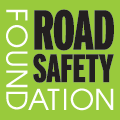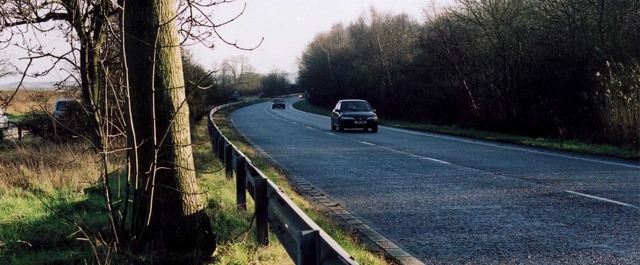ROAD SAFETY FOUNDATION REVEALS SAFETY RATING OF ENGLAND’S TRUNK ROAD NETWORK
Two-thirds of England’s 1,600 km of single carriageway trunk roads win only a 2-star rating according to a report by the Road Safety Foundation which has inspected 95 per cent of the 7,000 km Highways Agency (HA) network in England. The network has been safety rated to an international Star Rating system being applied worldwide as part of a new approach by leading authorities to make road infrastructure safer.
The European Road Assessment Programme (EuroRAP) Road Protection Score is a scale for rating roads on how well the design protects users from death or disabling injury when a crash occurs. Its sister programme, EuroNCAP, similarly measures the crash protection provided by new cars.
Four stars is the highest rating in the scale and motorways without deficiencies achieve this. Of the Agency’s network, some 50 per cent of motorways reach 4-star level, 78 per cent of dual carriageways rate 3-stars but some two thirds of single carriageway trunk roads achieve only a 2-star rating.
Dr Joanne Hil, Director of the Road Safety Foundation, which carried out the research, says: “Our assessment of trunk roads considers three key elements: the protection provided if vehicles run off the road; the risk of head-on collisions; and the safety of junctions. Motorways are our safest roads, scoring well on two of these factors but half do not protect road users who, for whatever reason, run off the road.
“Dual carriageways score well on head-on protection with 97 per cent reaching the highest standard – but 90 per cent fail to reach the highest standards for run-off protection. A quarter feature surface level junctions, lay-bys and minor accesses which do not afford the protection necessary for busy inter-urban roads, giving them low scores. Overall scores combined, 78 per cent of the dual carriageway network rates 3 stars.
“Single carriageways lack most of the safety features that would protect road users and almost two-thirds (62 per cent) get an overall rating of 2 stars. Some 91 per cent fail to reach high standards for run-off. Head-on collisions are prevented only by road markings. Where road sections have junctions, few layouts rate well.”
Dr Hill praises the Highways Agency for its openness and cooperation in compiling the report. “The Agency has seen the benefit of this approach and how these results can help guide future improvements to prevent the 2,000 deaths and serious injuries annually on its network,” she says. “Importantly, the Agency is providing a lead to other road authorities in the UK and across Europe.”
Commenting on safe road design generally Dr Hill says: “A quarter of all British rural road deaths involve hitting roadside objects. It is common to see unprotected steep embankments, poles or trees that have grown far too close to the road. A quarter die at junctions and there are simply too many junctions that do not provide protection to turning vehicles. Around 20 per cent of road deaths occur in head-on crashes and we must study other countries which are increasing protection on higher speed roads.”
John Dawson, Chairman of EuroRAP says: “If a driver is belted, sober and obeying the speed limit, then the risk of death and injury in a 4-star car on a 4-star road is small. But most rural roads in Europe are not safe at the posted speed limit. Most deaths happen on busy 1- or 2-star main single carriageway roads that need urgent investment in affordable safety line markings, safety fencing and junction layouts.”
Dawson continues: “Road crashes cost the British economy 1.5 per cent of GDP, some GBP18 billion, annually. A fortune is being spent on emergency services, hospitalisation and long term care of victims when we could make road travel as safe as rail or air. UK roads can be the safest in the world over the next decade if the same high return investment in safe road design is made as other leading nations.”
Notes to Editors
The Star Rating of the English trunk road network was financially supported by the Highways Agency. The Agency has also been involved in a trial in south-east England, seeking potential countermeasures for sections of route that score poorly.
Research was conducted with the assistance of TRL (UK), consultants Sweco (Sweden) and motoring organisation ADAC (Germany).
The government’s proposals on ‘visions, targets and measures’ published in April 2009 is called ” A Safer Way: Consultation on Making Britain’s Roads the Safest in the World“.
There were 2,538 killed on all Britain’s roads in 2008. Just over half of all road deaths occur on Britain’s motorways and rural A roads. In England, most of the A-road network is looked after by local authorities.
The Highways Agency’s 7000km network is motorway (41%), trunk road dual carriageway (39%) and trunk road single carriageway (20%).
On the Highways Agency network in 2008, there were 141 fatal and 776 serious casualties on motorways and 199 fatal and 937 serious on trunk A roads. Deaths had reduced by 6% compared with 2007 and serious injuries by 14%.
On rural roads in Britain, an OECD report has reported the following crash types: head-on (19%), single vehicle run off the road (26%), junction (27%), pedestrian/cyclist (9%), other (19%).
Get up to date news from the Road Safety Foundation by following us on Twitter.

